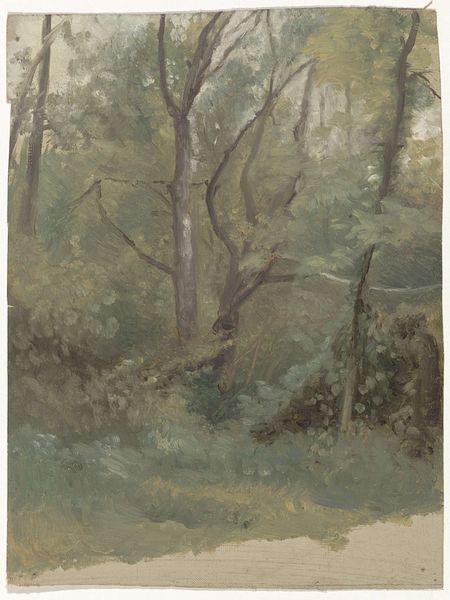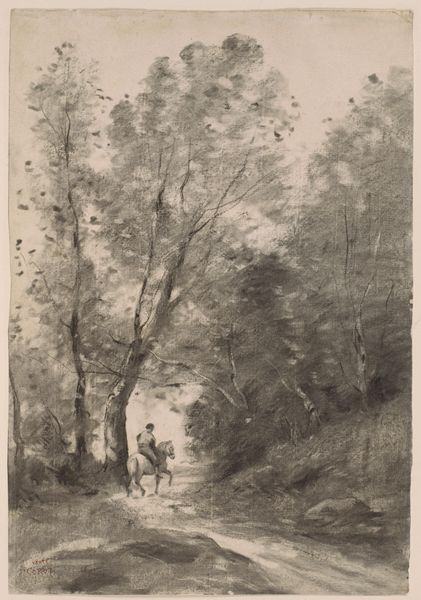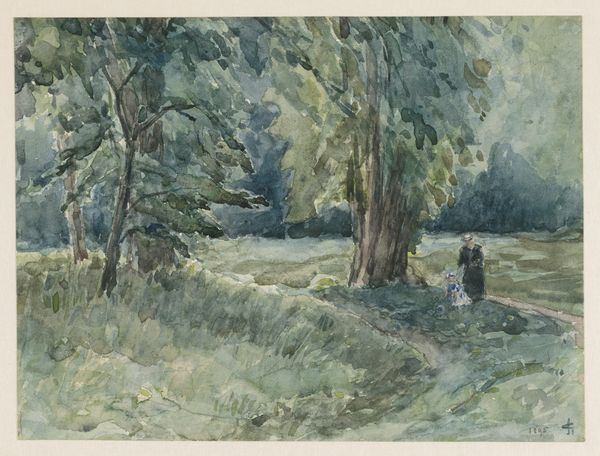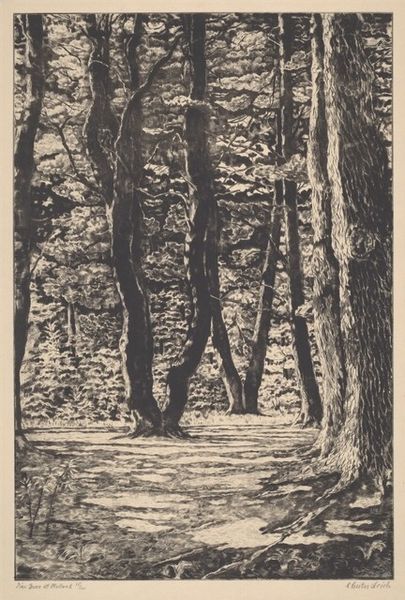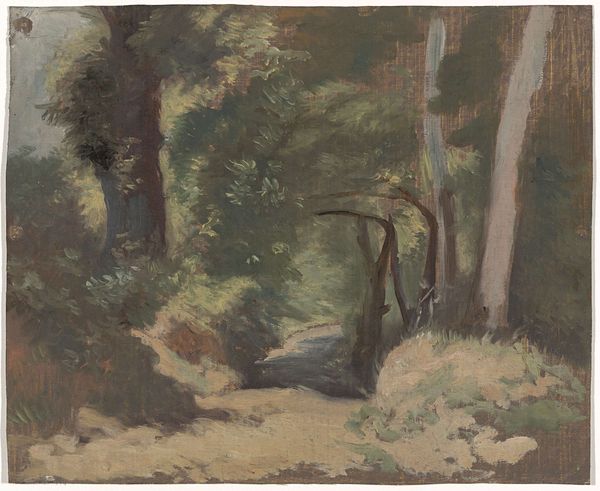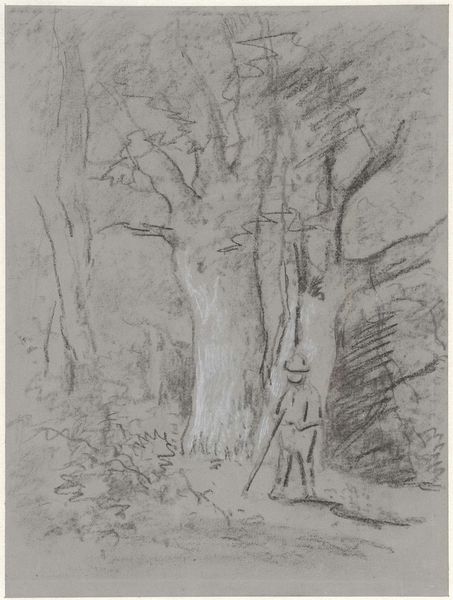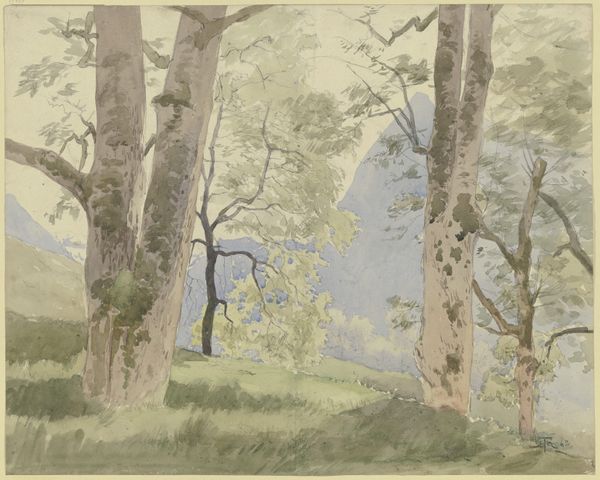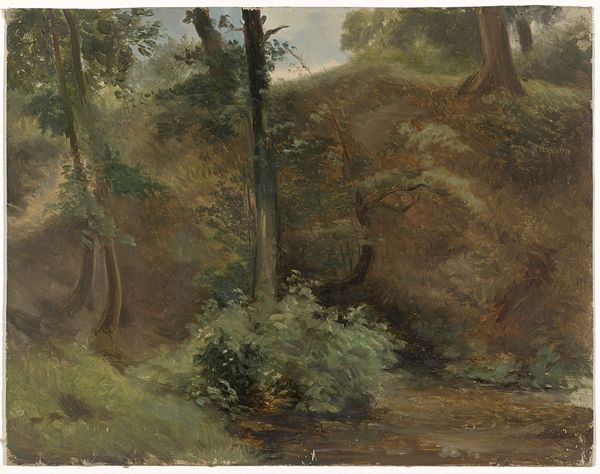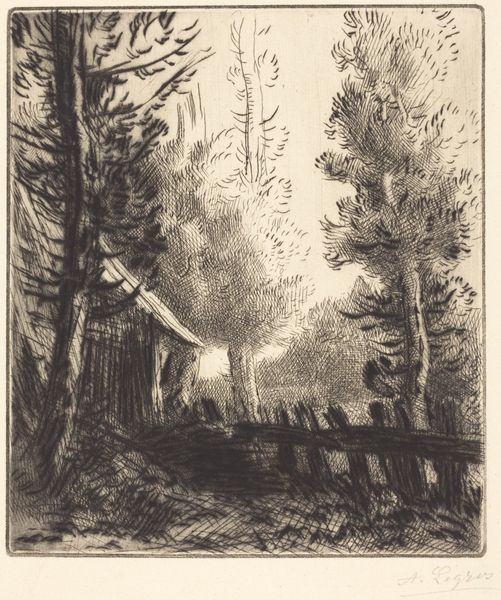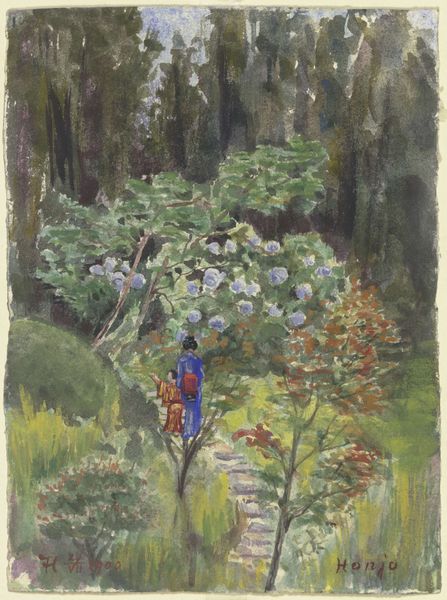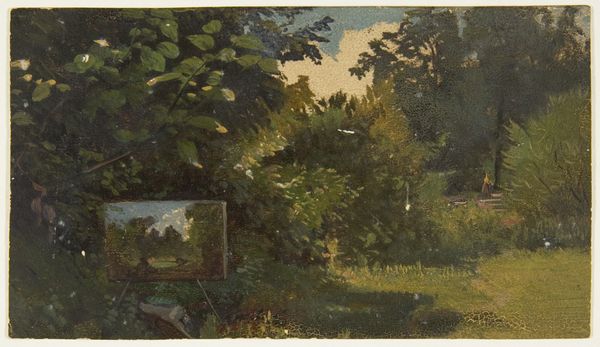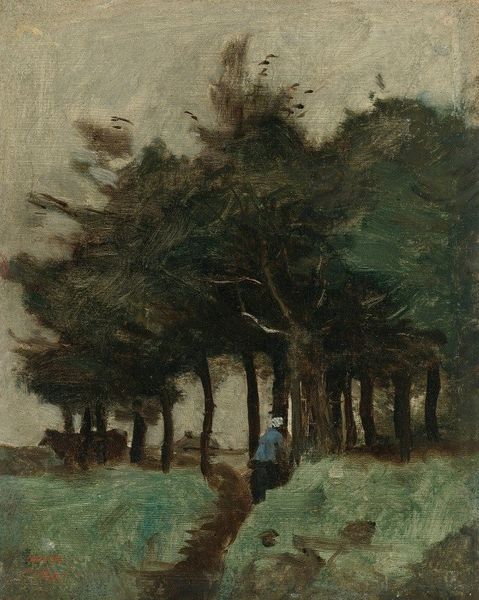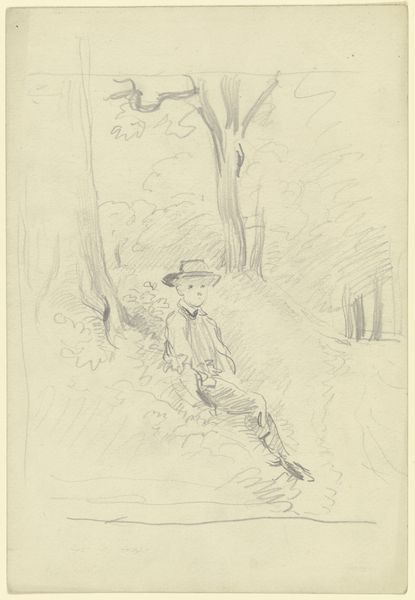
painting, watercolor
#
portrait
#
painting
#
landscape
#
oil painting
#
watercolor
#
intimism
#
genre-painting
#
realism
Dimensions: height 252 mm, width 177 mm
Copyright: Rijks Museum: Open Domain
Curator: Welcome. Before us hangs Jan Veth’s work, "Lezende man in boslaan", which translates to "Reading Man in a Forest Path". Its creation is generally placed somewhere between 1874 and 1925. Editor: It feels incredibly private, doesn't it? Almost like stumbling upon someone's hidden sanctuary. All that lovely, dappled green pressing in – it's like the forest is sharing a secret. Curator: That’s a compelling observation. Genre scenes like these, portraying quiet moments, experienced increasing visibility during the late 19th and early 20th century as social values shifted toward celebrating domestic life and individual reflection. Veth captured everyday experiences. Editor: It’s painted with such lightness, almost like he’s breathed it onto the paper, probably using watercolor as one of the layers, so fluid and unassuming, not at all imposing. Like, "Excuse me, tree, I’m just going to capture your loveliness." Curator: While his choice of a woodland path might speak to prevailing social interests, remember also the role of artists, who began championing such ordinary subjects and rejected academic restrictions in favor of greater realism, turning increasingly to depicting middle-class scenes. Editor: Realism indeed! There is definitely no room to sugarcoat what that poor guy has to endure: sitting there, against the edge of the trees, is not the most comfortable of activities if he wanted to read and reflect, surrounded by those dense leaves! He is a tough one for sure! Curator: That is a wonderful consideration, the position can look awkward for sure but maybe it says less about the "model" and more about the changing values around painting in Europe at that time. The focus was indeed on representing realities, challenging the norms upheld in powerful academic institutions. Editor: Absolutely, you make a compelling argument that there were shifts towards challenging norms during the Realism period; and here the author brings this feeling while the character reflects deeply. It almost pulls me in, this little piece of intimate space with its lone man. Curator: Thank you for your impressions, these pieces often give insights into aspects of a specific era that history overlooks. Let's continue.
Comments
No comments
Be the first to comment and join the conversation on the ultimate creative platform.
